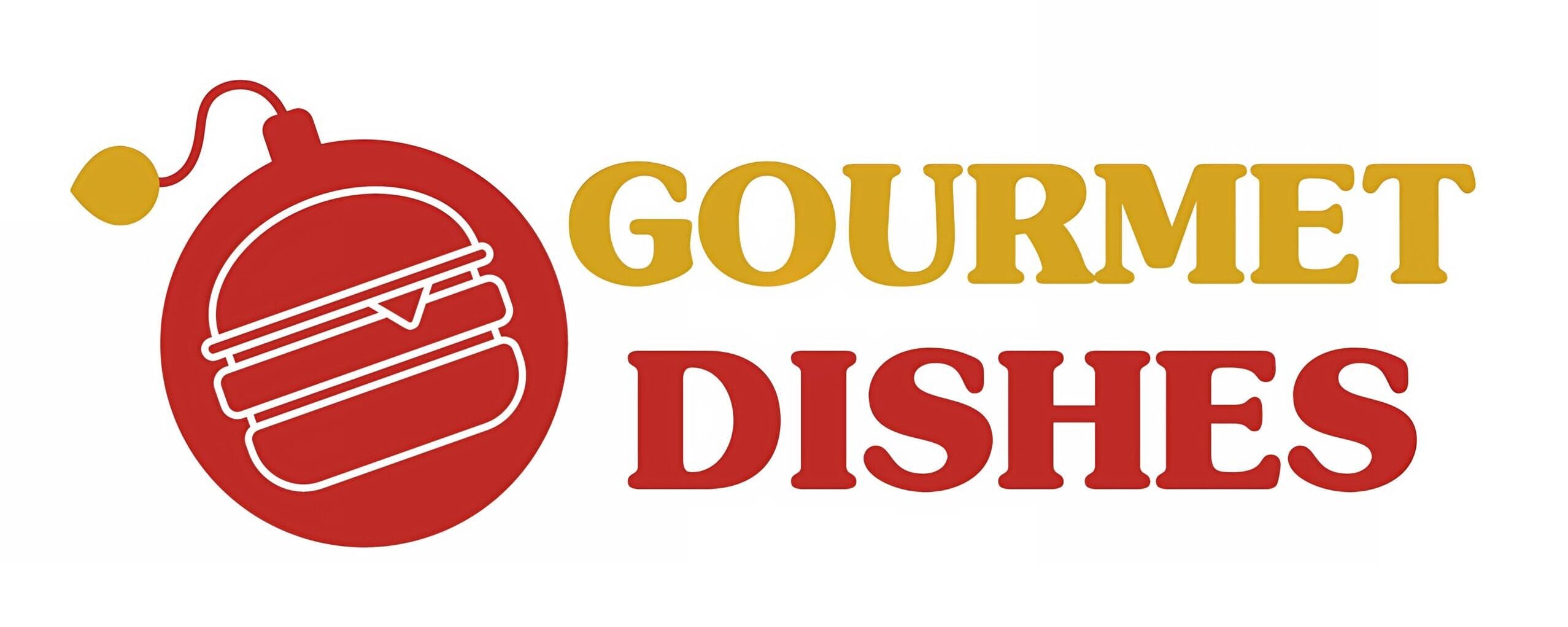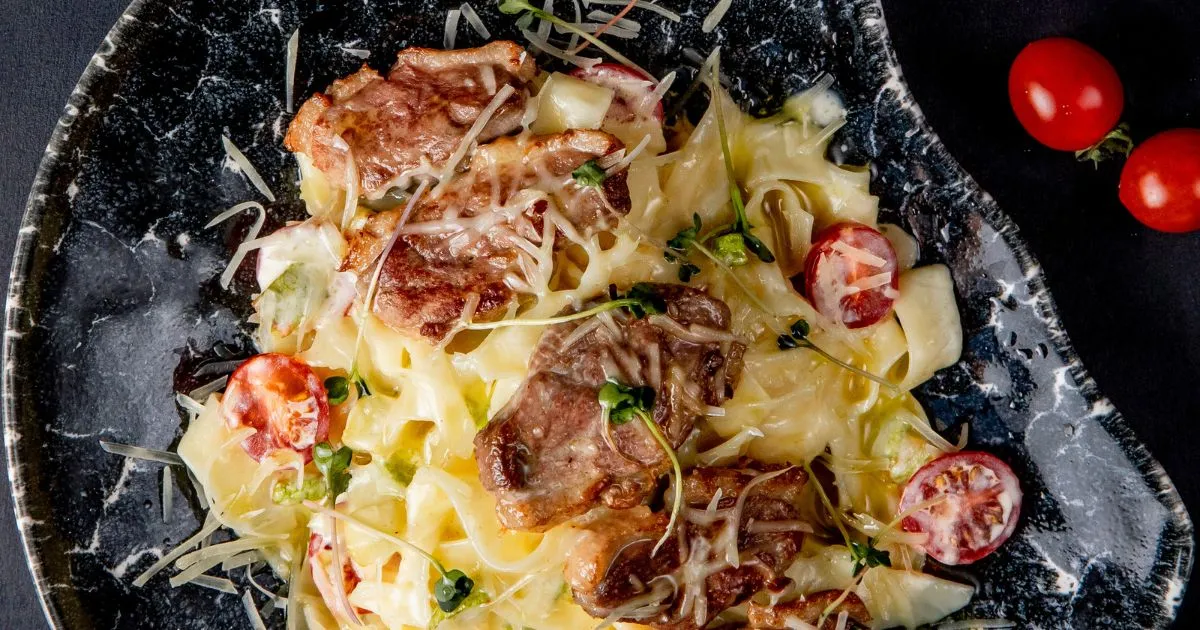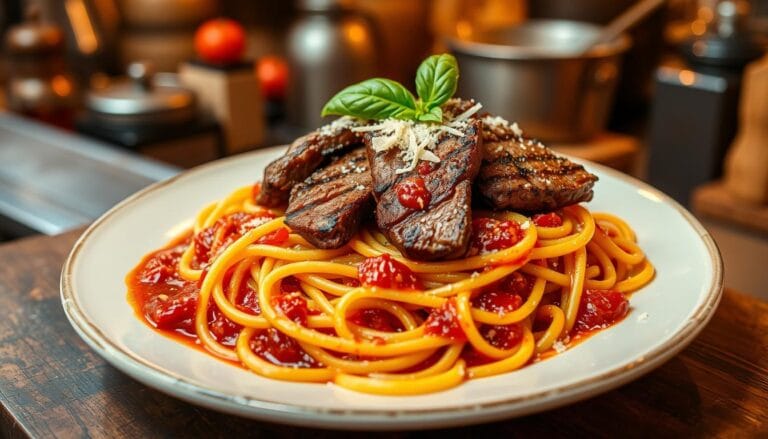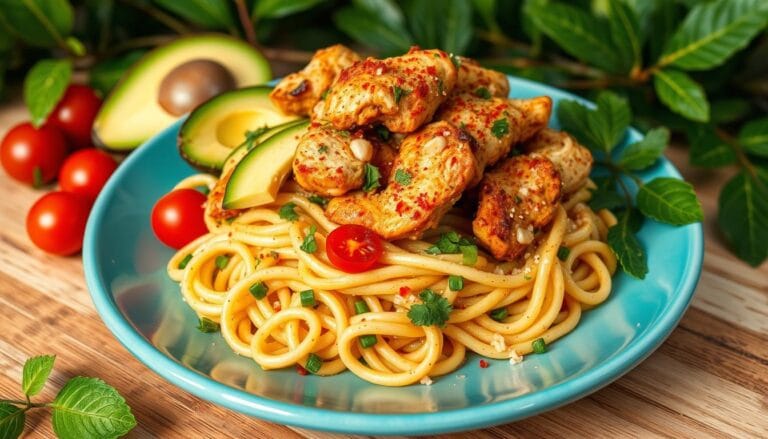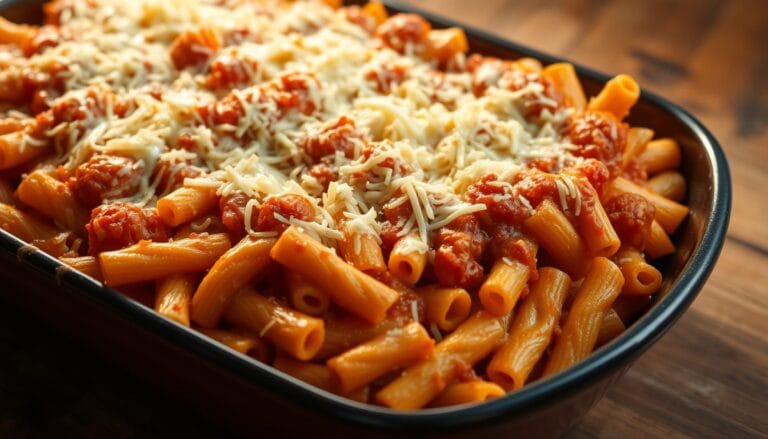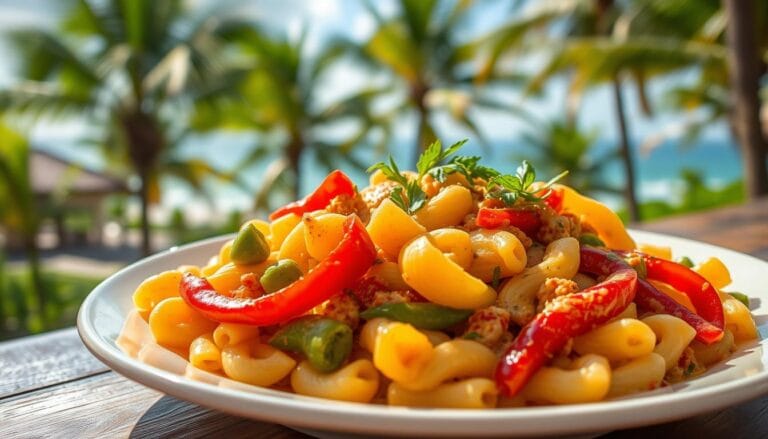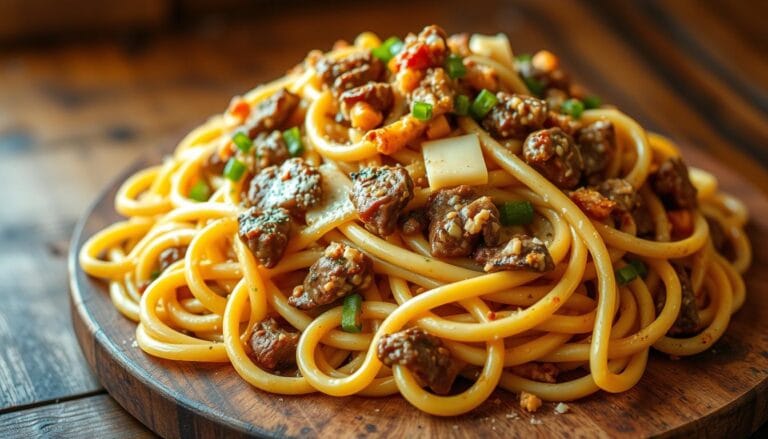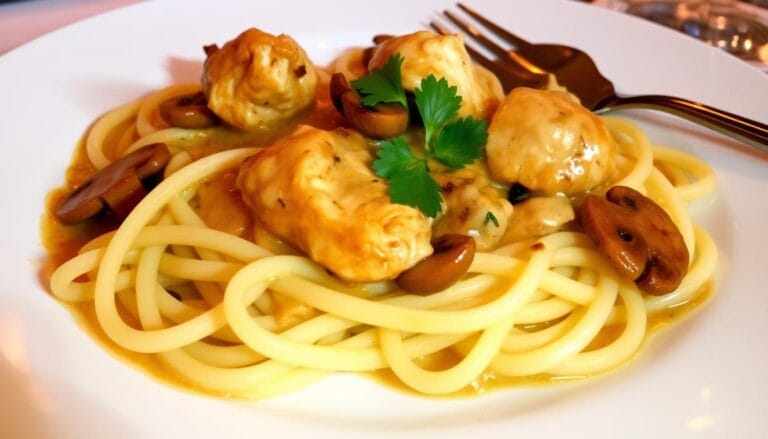How to Make Steak and Pasta : A Complete Guide
Table of Contents
Steak And Pasta
Welcome to the ultimate guide on making steak and pasta. This classic dish combines a rich steak with simple al dente pasta and a savory sauce. You’ll learn how to make delicious steak and pasta dishes, whether you’re new to cooking or an experienced chef.
In this guide, you’ll discover the secrets to perfect steak and pasta. You’ll learn about the right equipment, how to choose the best steak, and how to pair it with different pasta and sauces. By the end, you’ll be able to make mouth-watering steak and pasta dishes that will impress everyone.
Introduction to Steak and Pasta
Steak and pasta is a favorite dish in many U.S. restaurants. The mix of tender steak and flavorful pasta sauce is unbeatable. In this guide, you’ll learn to make steak and pasta like a pro, with tips from top chefs.
Key Takeaways
- You will learn how to choose the right cut of steak for your steak and pasta dish
- You will discover the secrets to cooking the perfect steak
- You will learn how to pair your steak with a variety of pasta types and sauces
- You will learn how to present your steak and pasta dish like a pro
- You will learn how to troubleshoot common cooking issues with steak and pasta
- You will learn how to store and reheat your steak and pasta leftovers safely
Essential Equipment for Preparing Steak and Pasta
To make a tasty beef steak pasta dish, you need the right kitchen tools. Before cooking, check your kitchen for the necessary items. This will help you prepare a delicious steak and pasta meal.
A high-quality skillet or grill pan is key for steak. It ensures even heat and a great sear. Also, a meat thermometer is vital to cook the steak just right. For pasta, you’ll need a big pot for boiling and a colander for draining.
Kitchen Tools for Steak Preparation
- Skillet or grill pan
- Meat thermometer
- Tongs for flipping the steak
Pasta-Making Equipment
A pasta maker is great for making fresh pasta at home. But, if you’re in a hurry or prefer store-bought pasta, a large pot and colander will do.
Optional but Helpful Gadgets
Optional gadgets like a garlic press and a grater can make cooking better. They add extra flavor to your dish. With the right kitchen tools and equipment, you’ll create a delicious beef steak pasta meal that will impress everyone.
Choosing the Perfect Cut of Steak
The cut of steak you pick can really make your dish stand out. You’re looking for something that’s both tasty and tender. Think about trying ribeye, sirloin, or filet mignon. Each has its own special qualities.
A ribeye is great for those who love a tender, rich steak. Sirloin is leaner and better for a healthier choice. Filet mignon is tender and lean, perfect for a special meal.
- Ribeye: rich, tender, and full of flavor
- Sirloin: leaner, slightly healthier, and still packed with flavor
- Filet mignon: tender, lean, and perfect for a special occasion
Choosing the right steak is key to a delicious dish. Whether you want something rich or lean, there’s a steak for you. The perfect cut will make your meal both tasty and satisfying.
| Steak Cut | Tenderness | Flavor |
|---|---|---|
| Ribeye | High | Rich |
| Sirloin | Medium | Lean |
| Filet Mignon | High | Tender |
Understanding Different Pasta Types and Shapes
Choosing the right pasta for beef strips can really change the dish. There are many types of pasta, each with its own look and feel. This variety can make picking the perfect pasta a bit tricky.
For beef strips, long, flat pasta like pappardelle or fettuccine is great. These shapes catch sauce well, enhancing the flavor of the steak. You might also like spaghetti or linguine for a different twist.
Fresh vs. Dried Pasta
Fresh pasta tastes and feels different from dried pasta. Fresh pasta offers a more authentic Italian taste. Dried pasta, however, is easy to store and just as tasty.
Best Pasta Shapes for Steak Dishes
Here are some top pasta shapes for steak:
- Pappardelle: a wide, flat shape that pairs well with rich sauces
- Fettuccine: a long, flat shape that works well with creamy sauces
- Spaghetti: a long, thin shape that pairs well with light, oily sauces
Making Fresh Pasta at Home
Making pasta at home is fun and rewarding. With flour, eggs, and water, you can make your own pasta. It adds a personal touch to your meal.
| Pasta Type | Shape | Best With |
|---|---|---|
| Pappardelle | Wide, flat | Rich sauces |
| Fettuccine | Long, flat | Creamy sauces |
| Spaghetti | Long, thin | Light, oily sauces |
Preparing Your Steak for Cooking
To get a perfect steak, focus on the preparation. Let your steak warm up to room temperature before cooking. This ensures it cooks evenly. Use a meat thermometer to check the doneness.
For ribeye recipe ideas, marinate your steak in olive oil, garlic, and herbs. Then, grill or pan-fry it.
When preparing steak, consider a few important things. These include:
- Choosing the right cut, like a ribeye or sirloin
- Seasoning with salt, pepper, and herbs
- Cooking it to the perfect doneness
By following these tips and trying out different ribeye recipes, you can make a delicious steak. Always focus on proper preparation to get a perfect steak every time.
A good steak is about the meat quality and the cook’s skill. With practice, you can impress everyone with your steak-making skills.
As you try new steak preparation methods and ribeye recipes, don’t be afraid to experiment. With practice and patience, you’ll soon make the perfect steak dish.
The Art of Making Steak and Pasta Together
Cooking steak and pasta together requires perfect timing. You want your pasta to be just right and your steak to be cooked perfectly. It’s important to manage your temperatures well, keeping pasta water boiling and steak at the right temperature.
Using the right cooking techniques is key. These techniques help you make a dish that tastes great and looks good. For example, you can use “sous vide” to cook your steak to the perfect temperature while your pasta cooks in another pot.
Timing Considerations
To get your steak and pasta ready at the same time, follow these tips:
- Start cooking your pasta as the package says
- While pasta cooks, get your steak ready to cook
- Use a thermometer to check your steak’s internal temperature
Temperature Management
Managing temperatures is crucial when cooking steak and pasta. Keep your pasta water boiling and your steak at the right temperature. Use a thermometer to check your steak’s temperature and adjust the heat if needed.
By following these tips and mastering cooking steak and pasta together, you can make a delicious and impressive dish. With practice and patience, you’ll become a skilled cook, able to make many different steak and pasta dishes.
Mastering the Perfect Steak Temperature
To get a perfect steak, knowing the right temperature is key. Cooking techniques greatly affect the outcome. For a medium-rare steak, the internal temperature should be between 130-135°F. Medium steaks need a temperature of 140-145°F, and medium-well steaks should be 150-155°F.
Using a meat thermometer is the best way to check your steak’s temperature. Remember, the temperature will rise a bit after you take the steak off the heat. Here are some tips to help you get the perfect steak temperature:
- Use a meat thermometer to check the internal temperature of your steak.
- Let the steak rest for a few minutes before serving to allow the juices to redistribute.
- Don’t press down on the steak with your spatula while it’s cooking, as this can squeeze out juices and affect the temperature.
By following these tips and practicing your cooking, you’ll get the perfect steak temperature every time. Perfect steak temperature is about finding the right balance between cooking time and internal temperature. With a bit of practice, you’ll be a pro at cooking steak in no time.
Creating Complementary Sauces for Your Dish
To make your steak and pasta dish even better, try out different steak sauces and pasta sauce pairings. A great sauce can turn a good dish into an amazing one. For steak sauces, you can’t go wrong with Béarnaise or peppercorn. But don’t be shy to try something new.
For pasta sauce pairings, a light sauce can balance a rich steak, while a hearty sauce can match a bold ribeye. Here are some favorites:
- Marinara sauce for a classic Italian vibe
- Alfredo sauce for a creamy treat
- Pesto sauce for a fresh, herby flavor
For something unique, mix flavors from different cuisines. For instance, a soy sauce and ginger sauce can bring a thrilling taste to your dish. By mixing and matching steak sauces and pasta sauce pairings, you can create a memorable meal.
Seasoning Techniques for Enhanced Flavor
To make your steak and pasta dishes better, learning seasoning techniques is key. Try different herbs and spices to find unique flavors. For example, salt, pepper, and garlic are great with steak. Meanwhile, parmesan cheese and fresh basil can make pasta taste amazing.
When seasoning, balance is crucial. You want to boost your ingredients’ natural flavors without overwhelming them. Here are some tips to help you achieve this balance:
- Start with a light hand: Add seasonings gradually, tasting as you go, to avoid over-seasoning.
- Experiment with different combinations: Try pairing herbs and spices to create unique flavor profiles.
- Consider the cooking method: Adjust your seasoning techniques based on the cooking method, such as grilling, roasting, or sautéing.
By using these seasoning techniques, you can greatly improve your dishes’ flavors. Remember, seasoning is about finding the right balance to highlight your ingredients. With time and practice, you’ll develop your own special seasoning ways to make your steak and pasta dishes even better.
| Seasoning Technique | Recommended Ingredients | Flavor Profile |
|---|---|---|
| Italian-Style | Basil, oregano, parmesan cheese | Herbaceous, savory, slightly sweet |
| Garlic and Herb | Garlic, thyme, rosemary | Pungent, aromatic, earthy |
| Spicy | Red pepper flakes, paprika, cumin | Spicy, smoky, bold |
Popular Steak and Pasta Combinations
Steak and pasta combinations offer endless options. You can try different regions for unique twists. Pairing steak with pasta can make a meal both delicious and satisfying.
A Mediterranean style is a tasty choice. It includes fettuccine, cherry tomatoes, and a light, herby sauce. This mix lets the steak and pasta flavors shine, with cherry tomatoes adding freshness. Another choice is American fusion, with grilled steak, mac and cheese, crispy bacon, and BBQ sauce.
Mediterranean Style
Mediterranean style uses fresh herbs, lemon, and garlic for a light sauce. Grilled veggies like zucchini or bell peppers add to the dish. The goal is to balance flavors and textures, letting each ingredient shine.
Italian Classic Variations
Italian classics, like spaghetti Bolognese, are a great choice. This dish has a rich meat sauce that coats pasta perfectly. Try different pasta types, like pappardelle or rigatoni, to find your favorite.
Exploring steak and pasta combinations lets you create a meal that’s both unique and delicious. Whether you like Mediterranean, American fusion, or Italian classics, the key is to balance flavors and textures for a great dish.
Proper Plating and Presentation Methods
Serving steak and pasta can be a real showstopper. The way you present it can make a big difference. Try placing the steak on top of pasta, with sauce drizzled over both. This looks great and balances flavors and textures.
To make your dish even more appealing, add some garnishes. Fresh herbs or parmesan shavings can add color and texture. Here are some great garnish options:
- Fresh basil or parsley
- Parmesan or mozzarella cheese shavings
- Cherry tomatoes or sliced bell peppers
Keep your plating simple and balanced. The steak and pasta should be the main attraction. Avoid too many extras. With a bit of creativity, you can wow your guests with a beautiful presentation.
| Plating and Presentation Tips | Description |
|---|---|
| Balance | Achieve a balance of flavors, textures, and colors on the plate |
| Harmony | Choose garnishes and sauces that complement the steak and pasta |
| Creativity | Don’t be afraid to experiment with different plating and presentation styles |
By using these tips, you can make a stunning steak and pasta dish. It will impress your guests and create a memorable experience. Whether it’s a romantic dinner or a big party, the right plating can make a huge difference.
Wine and Beverage Pairing Suggestions
Enjoying your steak and pasta can be even better with the right wine or drink. Think about the flavors of your dish to find the perfect match. The type of steak and pasta you serve matters a lot.
Start by looking at your steak’s richness and flavor. A bold steak goes well with a full-bodied red wine. For a lighter steak, a crisp white wine is better. You can also try non-alcoholic drinks like lemonade or iced tea for a refreshing touch.
Red Wine Options
Red wines like Cabernet Sauvignon, Merlot, and Pinot Noir are great for steak and pasta. They come in different flavors, from bold to light. Think about the wine’s tannins and acidity to match your dish’s flavors.
White Wine Selections
For white wines, Chardonnay or Sauvignon Blanc are good choices. They’re crisp and refreshing, perfect for creamy pasta sauces. They also balance the richness of the steak.
Non-Alcoholic Pairings
Non-alcoholic drinks can be just as good as wine. Try lemonade, iced tea, or infused water for a refreshing contrast. These drinks clean your palate, letting you enjoy your meal more.
| Wine/Beverage | Pairing Suggestions |
|---|---|
| Cabernet Sauvignon | Rich and bold steak, creamy pasta sauces |
| Chardonnay | Creamy pasta sauces, delicate steak |
| Fresh Lemonade | Light and refreshing steak and pasta dishes |
By choosing the right wine or drink, you can make your meal even better. Think about your steak and pasta’s flavors and textures. Pick something that complements and enhances them.
Troubleshooting Common Cooking Issues
When cooking steak and pasta, cooking issues can pop up. But, with the right troubleshooting tricks, you can fix them. If your steak is too tough, try cutting it thinly against the grain. For pasta that’s not done, a quick boil can solve the problem.
Here are some tips for common cooking issues:
- For overcooked steak, slice it thinly against the grain
- For undercooked pasta, give it a quick boil
- For too-thick sauces, add a bit of pasta cooking water
- For too-thin sauces, simmer them down until they reach the desired consistency
Remember, troubleshooting is about staying calm and quick thinking. Being ready for common cooking issues means a delicious meal without stress. With these tips, your steak and pasta will always be perfect.
| Cooking Issue | Troubleshooting Tip |
|---|---|
| Overcooked Steak | Slice it thinly against the grain |
| Undercooked Pasta | Give it a quick boil |
| Too-thick Sauces | Add a bit of pasta cooking water |
| Too-thin Sauces | Simmer them down until they reach the desired consistency |
Storage and Leftover Management
After enjoying your steak and pasta, it’s key to store leftovers right to keep food safe. Cool your dish to room temperature before refrigerating or freezing. This step stops bacteria from growing and keeps your food fresh longer.
Food safety is crucial when storing leftovers. Store your steak and pasta in airtight containers. Make sure to label them with the date and what’s inside. This helps you keep track of how long they’ve been stored.
Proper Storage Techniques
To keep your leftovers in top shape, follow these storage tips:
- Refrigerate at a temperature of 40°F (4°C) or below
- Freeze at a temperature of 0°F (-18°C) or below
- Use airtight, shallow containers to prevent moisture buildup
Reheating Methods
When reheating, make sure to heat your leftovers to 165°F (74°C) to avoid foodborne illness. You can reheat in the oven, microwave, or on the stovetop. Always check the food’s temperature before serving.
| Reheating Method | Temperature | Time |
|---|---|---|
| Oven | 350°F (175°C) | 10-15 minutes |
| Microwave | High heat | 30-60 seconds |
| Stovetop | Medium heat | 5-10 minutes |
By sticking to these storage and reheating tips, you can safely enjoy your steak and pasta leftovers. Always check the food’s temperature before serving. And remember to store leftovers in airtight containers.
Dietary Modifications and Alternatives
Enjoying steak and pasta can be easy for everyone with the right dietary modifications. Whether you have gluten intolerance, prefer vegetarian or vegan, or want healthier choices, there are many alternatives to try.
For example, gluten-free pasta is now easy to find in most stores. This change can greatly help those with gluten intolerance. You can also choose leaner steak cuts or try plant-based “steak” made from tofu or tempeh.
Some great dietary modifications and alternatives include:
- Gluten-free pasta
- Vegetarian or vegan “steak” options
- Leaner cuts of steak
- Dairy-free sauces
Being creative with ingredients and cooking methods ensures everyone can enjoy this classic dish. Whether you’re looking for dietary modifications or alternatives, finding options that suit you and your guests is key.
| Dietary Restriction | Modification/Alternative |
|---|---|
| Gluten Intolerance | Gluten-free pasta |
| Vegetarian/Vegan | Plant-based “steak” options |
| Dairy-Free | Dairy-free sauces |
Conclusion
As we wrap up our guide on making the perfect steak and pasta dish, remember the journey is key. It takes time, practice, and a desire to try new things. But the reward is a meal you can share with loved ones.
We’ve talked about the right tools, the best steak cuts, and how to mix pasta and steak. Now, it’s your turn to use these tips in your kitchen. Feel free to experiment with new flavors and ways of combining them. The fun of cooking is in exploring.
The end of this steak and pasta guide is just the start of your cooking adventure. Enjoy the process, relish the tastes, and most of all, have fun making meals that feed both your body and spirit.
FAQ
What essential equipment do I need for preparing steak and pasta?
For steak, you’ll need a good skillet or grill pan, tongs, and a meat thermometer. For pasta, a large pot and a colander are key. Optional tools like a garlic press and grater can also help.
What is the best cut of steak to use for a steak and pasta dish?
Choose from ribeye, sirloin, or filet mignon. Each has its own taste. Ribeye is rich and tender, while sirloin is leaner.
What are the best pasta shapes to use with steak?
Long, flat shapes like pappardelle, fettuccine, or spaghetti work well. They hold sauces nicely.
How do I properly prepare my steak for cooking?
Let your steak warm up to room temperature. Use a meat thermometer for the right doneness. For ribeye, marinate in olive oil, garlic, and herbs before cooking.
What is the perfect steak temperature for a steak and pasta dish?
For medium-rare, aim for 130-135°F. For medium, 140-145°F. For medium-well, 150-155°F. The temperature will rise after cooking, so adjust.
What are some popular steak and pasta combination ideas?
Try a Mediterranean mix with fettuccine, cherry tomatoes, and a herby sauce. For an American twist, pair grilled steak with mac and cheese, bacon, and BBQ sauce. Italian classics include spaghetti Bolognese.
What are some wine and beverage pairing suggestions for steak and pasta?
Red wines like Cabernet Sauvignon or Pinot Noir pair well. Chardonnay or Sauvignon Blanc work for white. Fresh lemonade or iced tea offer a nice contrast.
How do I properly store and reheat leftover steak and pasta?
Cool the dish to room temperature before refrigerating or freezing. Reheat to 165°F to avoid illness. Portion leftovers for easy reheating and safety.
What dietary modifications or alternatives can I make for steak and pasta?
Use gluten-free pasta for those with gluten issues. Try vegetarian or vegan “steak” options. Modify sauces to be dairy-free or choose leaner steak for a healthier meal.
